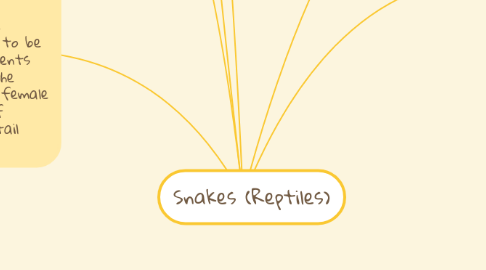Snakes (Reptiles)
by Lovie Dovie

1. RESPIRATORY - snakes have nostrils which are used for breathing. they also have glottis: which is in the bottom of the mouth, which lets air that is inhaled go to the lungs. This helps the snake while it is eating. The `hiss` is actually from the glottis when the snake forcefully exhales, its not from the tongue itself. the organs are long and narrow, and the lung is in the neck region of the body, with a venom-conductive system snakes use to subdue prey. (figure a3.1)
2. CIRCULATORY - Snakes have 3 chambers in their heart, which is composed of two atria, which recieve the blood from the lungs and the body, and a large ventricle which pumps blood into the arteries. This means that snakes' circulatory system falls between rapid bursts of energy, to long lethargic days basking in the sun. (Figure a.3.2)
3. DIGESTIVE SYSTEM - Snakes a `J` shape organ in which most of the digestion occurs. The cells of the stomach secrete digestive enzymes and gastric juices which breakdown proteins where is in their prey. The food passes through the pyloric valve (which is in the stomach) and into the small intestines. (figure a3.1)
4. REPRODUCTION - Both males and females are remarkably adapt to flexibility and diversity when it comes to reproducing. Snakes use a wide range of reproduction modes (see females/Males section). But all snakes use Internal Fertilization which is laying eggs to be fertilized, while the embryo gets its nutrients from the yolk of the egg (figure a.3.5). the fertilization of the egg from within the female snake is accomplished by `forked pairs` of Hemipenes which are stored in the male's tail (figure a.3.1)
5. FEMALES - have a reproduction "mode" and frequency (they can mate several times). they have seasonal times for mating and producing young. This all helps to promote a flexible material control so that there is not an overcrowding population of snakes in an area. EXAMPLE. "Females can manipulate genotypes of offspring - through mating and/or sperm competition. They can also manipulate phenotype of their young by allocating a nest site, maybe for better access to food? Females can also change the behavior and physiological thermo-regulations meaning that her young are better equipped with survival instincts??
6. MALES - fight for females = through female mimicry (this potentially confuses other males in thinking that a female is nearby?), through male guarding (guarding a female from mating with other males) and combating other males for females.
7. MOVEMENT - Snakes do not have limbs instead they have an elongated body. They slither to move. There are four ways in which snakes use there bodies for movement...1) SIDE WINDING (is when snakes are moving on slippery surfaces like sand or mud, the snake pushes its head forward and the rest of the body follows it). (figure a.3.3)
8. 4) SERPENTINE (also known as LATERAL UNDULATION, is when the snake moves in a wave like formation,. This is the type of movement most people think of when thinking of snakes and their movements. To achieve this, the snake will use its body to `push` itself from a hard surface like a tree or a rock, to get itself moving. They can not use this on slippery or slink surfaces like glass though as there are no or very little grip for the snake to hold onto).
9. 3) RECTILINEAR ( is when the snakes movements are slow and creeping. The snake uses some of its scales on its stomach to grip the terrain while using other scales to move forward.)
10. 2) CONCERTINA (difficult for the snake to move but is effective in tight enclosed spaces. The snake braces its back portion of the body, while the front portion pushes and extends. the snake then drops the front body, straightens, pulling the back along with it. It is almost like they throw themselves forwards.)
11. 1) SIDE WINDING (is when snakes are moving on slippery surfaces like sand or mud, the snake pushes its head forward and the rest of the body follows it).
12. TEMPERATURE - Snakes are cold-blooded thus they lack the ability to generate their own body heat. Most snakes, prefer to be at a temperature between 70°F and 95°F (which is roughly 21°C and 35°C). To keep cool, snakes find shade like under a rock. They can also spread their rib cage to make the body wider, which soaks up more heat, and some snakes can darken their skin/scales to absorb more sun. (Figure a.3.4.)


